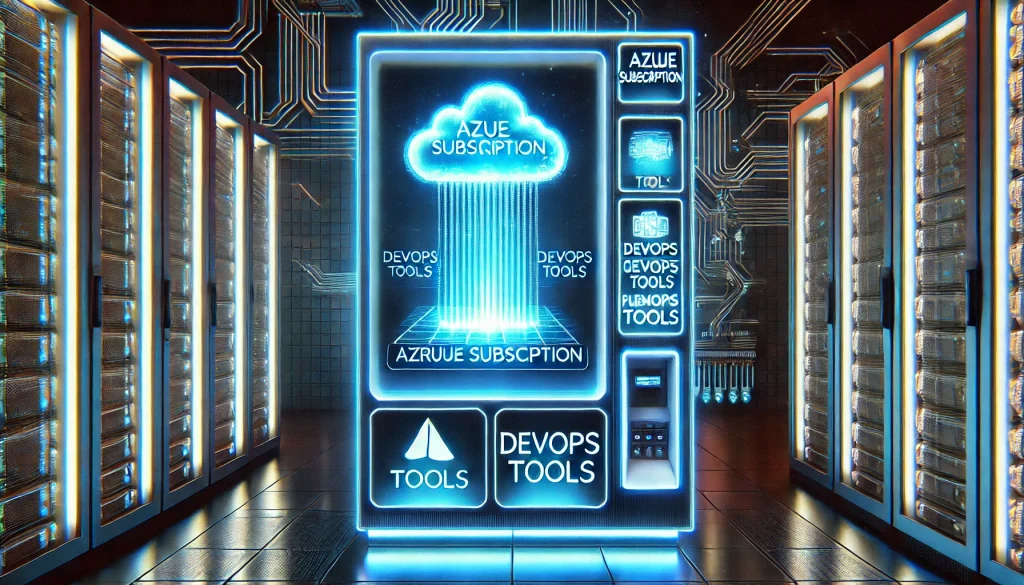
Introduction: Why Is Cloud Governance Important?
Let’s face it—cloud governance is a critical but often neglected aspect of cloud adoption. Organizations invest a fortune in cloud computing to drive innovation, scalability, and efficiency. Regardless, they continue to struggle with enforcing policies, managing cloud costs, and maintaining security over time. Without an effective cloud governance framework, your company may risk security breaches, compliance errors, and unnecessary spending.
A holistic cloud governance strategy is essential for organizations using Azure and hybrid cloud environments. This article will explore the best practices for mastering cloud governance and introduce a structured framework to ensure long-term success. If we’ve managed to pique your curiosity, then this is your sign to read on!
5 Pillars: Our Cloud Governance Framework for Sustainable Azure Management

Image credit: Freepik
Effective cloud governance requires a structured approach to ensure security, compliance, cost efficiency, and operational excellence in Azure environments.
Here are our five key pillars that form the definitive foundation of sustainable cloud governance in Azure:
- Security and Risk Management
- Cost Management and Optimization
- Cloud Resource Provisioning and Compliance
- Access Management and Identity Control
- Ongoing Monitoring and Automation
1. Security and Risk Management
Without security, there could be no effective cloud governance strategy. As organizations expand their cloud environments, security risks grow in complexity. Cyber threats, data breaches, and regulatory non-compliance are some of the biggest challenges that enterprises face.
Without a well-defined security framework, businesses expose themselves to operational disruptions and avoidable financial losses. A strong cloud security posture ensures that cloud services remain protected from both internal and external threats.
Best Practices For Cloud Security and Risk Management:
⚠️ Pro Tip: Implement Enterprise Policy-as-Code (EPAC) – If you wish to automate policy enforcement and reduce administrative overhead, then Enterprise Policy-as-Code (EPAC) is the right choice for you. EPAC is a key best practice in cloud governance that ensures consistent compliance across cloud environments.
Microsoft supports policy-as-code approaches using Azure Policy, ARM templates, and GitOps for governance enforcement. This approach enhances agility, minimizes human error, and enables scalable governance across multi-cloud and hybrid cloud landscapes.
- Define strict access controls – Limit your business’ exposure to security risks by implementing role-based access controls (RBAC) and least privilege principles.
- Leverage Microsoft Defender for Cloud – Enhance cloud security posture management (CSPM) and threat protection through continuous monitoring and proactive threat detection.
- Implement Zero Trust Architecture – Mitigate security risks by enforcing identity verification and access restrictions at every network layer.
2. Cost Management and Optimization

Image credit: Freepik
Managing cloud costs is a persistent challenge for IT leaders. Organizations often face unexpected cloud expenses due to inefficient resource allocation, unmonitored usage, and a lack of visibility into spending patterns.
Without a proper cloud financial management strategy, businesses risk budget overruns and operational inefficiencies. Implementing an optimized cost governance approach helps control spending while maximizing the value of cloud investments.
Best Practices For Cloud Cost Management and Optimization:
- Establish basic cost management controls – Set budget limits, cost alerts, and automated policies to prevent overspending.
- Leverage Azure Cost Management + Billing – Gain real-time visibility into cloud expenses and optimize spending based on usage insights.
- Implement automatic scaling capabilities – Adjust resource allocation dynamically to avoid unnecessary expenditures while ensuring optimal performance.
- Use reserved instances, Azure Savings Plans, and spot VMs – Optimize infrastructure costs by leveraging Azure’s flexible pricing models. Azure Savings Plans offer flexibility while reducing costs, making them an effective alternative to Reserved Instances.
3. Cloud Resource Provisioning and Compliance
Provisioning infrastructure in a cloud environment requires careful planning to ensure optimal performance and compliance. Organizations need to establish policies that govern how cloud resources are deployed, monitored, and managed.
Additionally, regulatory compliance requirements must be met to protect sensitive data and maintain business continuity. Without structured provisioning and compliance policies, businesses risk inefficiencies, security vulnerabilities, and regulatory penalties.
Best Practices:
- Define a cloud governance framework – Establish standardized policies that align with Azure Well-Architected best practices.
- Use Azure Policy, Template Specs, and Deployment Stacks – Automate and enforce compliance standards by defining and deploying standardized infrastructure configurations.
- Monitor cloud resources for compliance – Continuously track infrastructure configurations to meet industry regulations like GDPR, NIS2, and even HIPAA, if you’re part of the healthcare industry. Leveraging tools like Azure Policy, Microsoft Purview, and Compliance Manager helps maintain regulatory adherence and enforce governance at scale.
- Implement Infrastructure as Code (IaC) – Automate and standardize resource provisioning to ensure consistency and scalability. Use Bicep as a preferred alternative to raw ARM templates due to its improved readability and ease of use. Additionally, Terraform is an excellent choice for multi-cloud deployments, offering flexibility in managing cloud infrastructure across different providers.
4. Access Management and Identity Control

Image credit: Freepik
Managing user access to cloud services is yet another vital aspect of cloud security. For obvious reasons, only authorized users should be able to interact with your cloud environments. This way, you can drastically reduce the risk of data breaches and unauthorized modifications.
Without strong identity controls, you could face the danger of privilege misuse, insider threats, and compliance failures. A well-defined access management strategy helps enforce security while maintaining operational agility.
Best Practices For Clous Access Management and Identity Control:
- Enforce role-based access controls (RBAC) – Limit user access based on job functions and responsibilities.
- Utilize Microsoft Entra ID – Centralize identity and access management for cloud services.
- Implement Multi-Factor Authentication (MFA) – Require MFA for all users to enhance authentication security and prevent unauthorized access. Microsoft emphasizes that enforcing MFA is one of the most effective security controls in cloud governance, significantly reducing the risk of compromised credentials.
- Monitor cloud accounts for suspicious activity – Use automated security tools to detect and mitigate potential threats.
5. Ongoing Monitoring and Automation
Cloud environments are dynamic, requiring continuous monitoring and automation to maintain compliance and operational efficiency.
Without proper oversight, you can risk security vulnerabilities, misconfigurations, and performance degradation. Implementing automation and monitoring tools enables proactive issue resolution and enhances cloud governance.
Best Practices for Cloud Ongoing Monitoring and Automation:
- Implement Azure Policy – Enforce your compliance by creating your very own cloud governance policies.
- Use Azure Monitor for proactive issue detection – Continuously track cloud performance and identify anomalies.
- Deploy third-party tools for enhanced observability – Leverage specialized monitoring solutions to gain deeper insights into cloud operations.
- Automate infrastructure monitoring – Utilize AI-driven analytics and self-healing mechanisms to maintain operational excellence.
Why This Framework Will Help You Thrive In the Cloud Environment
If you choose to implement these five simple pillars, your organization could easily reach long-term success in both Azure and hybrid cloud environments. As we’ve seen, security, cost management, compliance, access control, and automation work together to create a resilient cloud governance model.
These pillars can enable CIOs, IT leaders, and DevOps teams to improve operational efficiency, mitigate risks, and align cloud computing operations with business goals.
How Cegeka’s Leading Hybrid Cloud Services Can Help

Image credit: Freepik
As a leading cloud service provider, Cegeka offers you end-to-end cloud governance solutions tailored for hybrid cloud environments. Cegeka ensures compliance, optimizes costs, and enhances overall operational efficiency. How? By integrating security, financial management, and automated monitoring.
With industry-specific expertise in sectors like healthcare, manufacturing, and finance, Cegeka empowers businesses to implement cloud governance that aligns with Azure Well-Architected principles.
Here’s the Bottom Line
Mastering cloud governance is essential for long-term Azure success. A well-defined cloud governance framework ensures that organizations maintain security, optimize cloud costs, and enforce compliance across their entire cloud infrastructure. This 5 Pillars of Cloud Governance Framework for Sustainable Azure Management will help you achieve the operational excellence you’ve been working for.
As organizations continue their cloud journey, implementing cloud governance solutions that align with Azure Well-Architected principles will be more needed than ever before. With Cegeka’s expertise in hybrid cloud management, you can deploy tailored governance strategies that reduce risks, improve your cloud security, and skyrocket your business’ efficiency to new heights.

